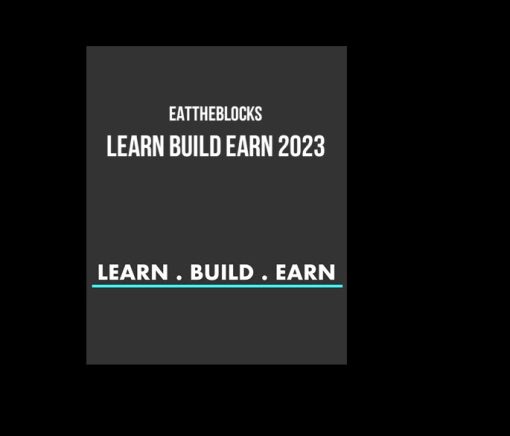
Develop Your Skills as a Blockchain Developer by Compiling a Strong Portfolio of 30 Ethereum Dapps!Are you enthralled by the world of cryptocurrencies and blockchain technology? Do you wish to break into this quickly expanding sector as a blockchain developer? You’ve come to the correct site if the answer is yes!
In this article, we’ll outline how to get started as a blockchain developer and compile an excellent portfolio of 30 Ethereum Dapps. Additionally, we’ll delve into the fascinating world of cryptocurrency trading bots and demonstrate how to create your very own. So let’s get going!
Why is Ethereum?
One of the most widely used blockchains is Ethereum, which is renowned for its smart contract functionality. It enables the creation and deployment of decentralized applications that function exactly as intended without interruption, fraud, or outside influence. For budding blockchain engineers, Ethereum offers the ideal playground thanks to its strong environment and active development community.
Creating a Portfolio
Creating an Ethereum Dapp portfolio is a great approach to market your abilities to potential companies or customers. It shows that you are capable of conceptualizing, creating, and releasing decentralized apps on the Ethereum blockchain. You will gain practical experience, which will help you become a more credible blockchain engineer.
How do you begin, then? To help you create your stunning portfolio of 30 Ethereum Dapps, here is a step-by-step guide:
1. Get to Know the Basics: Become familiar with Ethereum and blockchain technology’s foundational ideas. Recognize the function of decentralized apps, the operation of smart contracts, and the general structure of the Ethereum platform.
2. Develop Your Programming Skills: You need to have a solid background in programming to become a skilled blockchain developer. Put your attention on programming languages like Solidity, which are created expressly for Ethereum smart contract development.
3. Start with Simple Dapps: To demonstrate your grasp of the Ethereum technology, start by creating straightforward decentralized applications. Simple games, voting procedures, and token contracts might all be examples of this.
4. progressively Increase Complexity: As your confidence grows, progressively raise your Dapps’ level of complexity. Try out more sophisticated features such as non-fungible tokens (NFTs), decentralized finance (DeFi) protocols, and token standards (ERC-20, ERC-721).
5. Seek Feedback and Improve: Consistently look for input from the Ethereum development community and other industry professionals. As you advance, this will help you spot areas where you need to grow and hone your abilities.
6. Work together and make a contribution: Participate in open-source initiatives or team up with other developers to build your abilities and acquire experience with challenging Dapp development scenarios. Develop the Ethereum ecosystem actively to build your credibility as a developer.
7. Diversify Your Dapp Portfolio: Work to create a variety of Dapps in a variety of industries, including identity management, supply chain management, gaming, finance, and social media. This will show your adaptability and capacity to handle various use scenarios.
8. Showcasing Your Portfolio: Once you have a sizable portfolio, put your Dapps on a website or other online platform to display. To showcase your accomplishments, include detailed documentation, code samples, and interactive demos.
Create Your Own Crypto Trading Bot
Learning how to create your own cryptocurrency trading bot might be a useful ability for a blockchain developer in addition to creating Ethereum Dapps. A cryptocurrency trading bot is a piece of software that automatically places trades on your behalf using market indicators and pre-established trading methods.
Here is a quick rundown of the procedures for creating your own cryptocurrency trading bot:
1. Pick a Programming Language: Pick a language like Python, which is popular among programmers who create crypto trading bots.
2. Connect to Exchange APIs: Utilize the APIs of well-known cryptocurrency exchanges to integrate your trading bot with them. Your bot will be able to obtain real-time market data and do trades as a result.
3. Specify Trading Strategies: Based on your market study, define and put into practice trading strategies. This might involve sentiment research, arbitrage opportunities, or trend-following tactics.
4. Implement Risk Management: To minimize excessive losses, include risk management components in your bot. Stop-loss orders, tail stops, and position size restrictions are a few examples of this.
5. Backtesting and Optimization: To assess the performance of your trading techniques, test them against previous market data. To increase profits and reduce risks, optimize your bot’s settings.
6. Deploy and Monitor: Install your cryptocurrency trading bot on a dedicated PC or a cloud server. Keep an eye on its performance and make the appropriate changes as needed to accommodate shifting market conditions.
Always keep in mind that creating a successful crypto trading bot necessitates ongoing learning, adaptability, and keeping up with the most recent market developments. It’s a dynamic field that needs ongoing adjustment and progress.
Conclusion
It’s an exhilarating and fulfilling path to become a blockchain developer and amass an excellent portfolio of 30 Ethereum Dapps. It calls for commitment, ongoing education, and practical experience. You’ll be well on your way to becoming a skilled blockchain developer by following the methods described in this blog article.
After your purchase, you’ll receive a delivery email from us with a download link once we’ve verified and processed your order, typically within a few minutes to a few hours. If you have any questions or need assistance, feel free to reach out to us via live chat – we’re here to help!
All the Courses and Books that are available in our store are digital editions and Not Physical, and are delivered by email.
If you are teacher or you need a lot of books and courses that you need for fair price, Yes we can help and we can do bulk orders. and please contact us for that.
We understand the concern many have about the legitimacy of online platforms, especially when they offer courses and books at affordable prices. Here’s why you can trust coursesblock.com:
No There is no limitation to the number or type of devices you can access courses on.